Sculpture in Israel
Israel is a country packed with culture - and for art lovers, there’s an incredible amount to see, and not just in the endless museums scattered all across the country. Sculpture is not what often springs to mind when you say ‘art’ in Israel but it is a medium that’s becoming more and more prevalent.
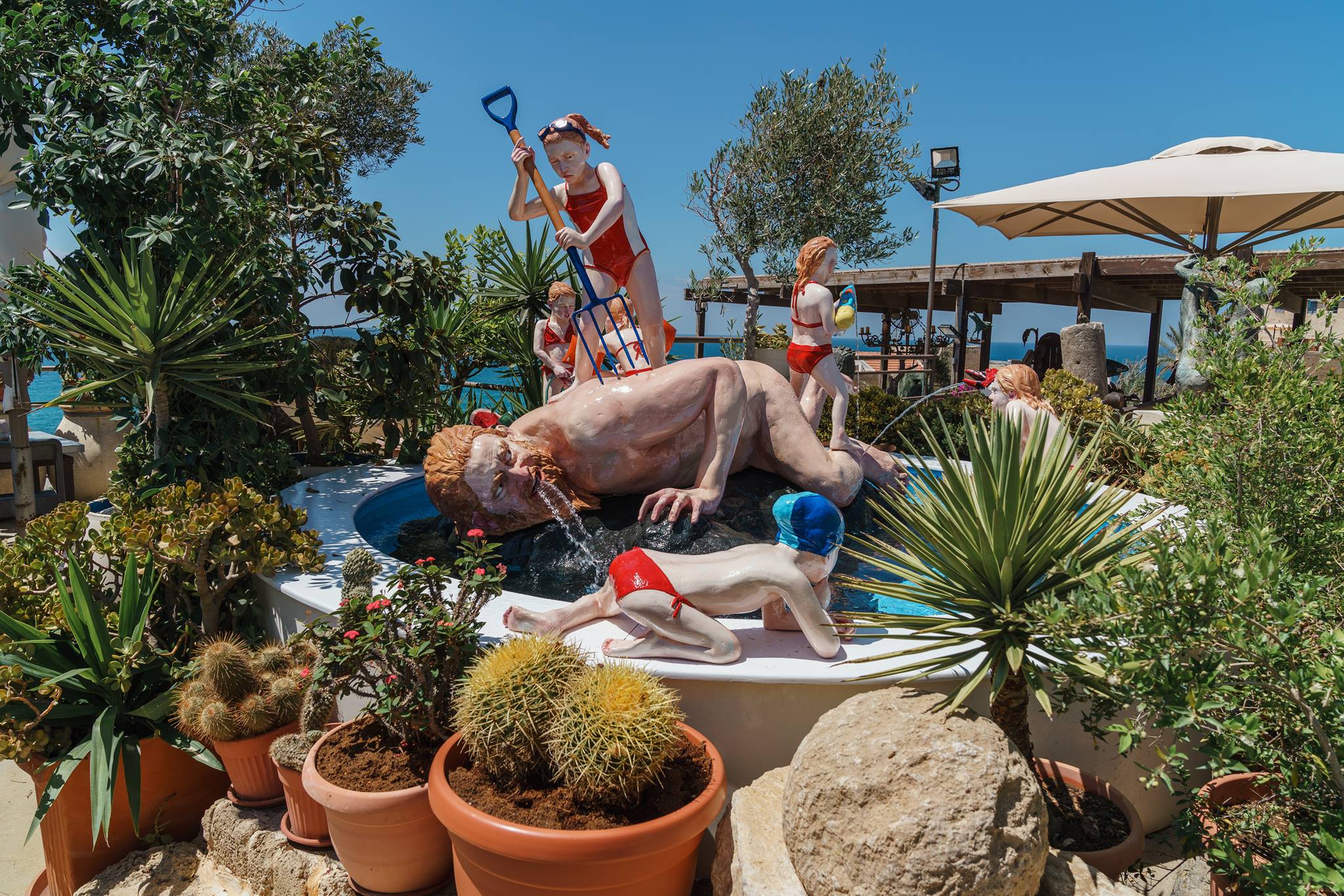
Sculpture in Ilana Goor Museum, Israel. Photo credit: © Dmitry Mishin
Whether you’re walking in Israeli sculpture gardens in the big museums of Tel Aviv and Jerusalem, exploring kibbutzim and moshavim (small settlements) in the countryside, or just traveling from place to place and stopping off randomly along the way, you’re going to see sculptures. There’s even one at Ben Gurion airport, at the arrivals gate - a figure reading a book (well, Jews are said to be the people of the book!) Let’s have a look at some of the most popular installations you can see when visiting Israel...
From when can we chart the beginnings of Israeli sculpture?
It’s fair to say that we can trace the beginnings of Israeli sculpture back to the founding of the Bezalel Academy of Art and Design in 1906. (Bezalel, according to the Hebrew Bible, was the most important artisan of his time, and, appointed by Moses, led the project to build the Ark of the Covenant).
Bezalel is situated in Jerusalem, on the Mount Scopus campus of the Hebrew University. It was founded in 1906 by Boris Schatz, a Jewish painter, and sculptor, and is Israel’s oldest educational institution. Schatz had a vision of a ‘national style’ of art that would blend traditional Jewish and Middle Eastern works with a European tradition.
What is interesting is that even though Schatz himself was a sculptor, sculpture was not really considered a priority, and much more emphasis was placed on the art of painting, as well as design. Of course, at that time, there were not many sculptors in Israel. The majority of them were immigrants from Europe and their work was often a fusion of European styles with a national artistic trend that was developing in the land of Israel (and, after 1948, the State of Israel).
Palmahim Beach sculptures, Israel. Photo by Chen Mizrach on Unsplash
Boris Schatz - The Father of Israeli Art
Schatz himself was considered the Father of Israeli Art. Before arriving in Jerusalem he had studied in Paris and had learned his skill from teachers who took quite a classical approach, so unsurprisingly his own work was very much influenced by this training. Nevertheless, because he was a Zionist, his subjects were primarily Jewish. He took figures from the Bible such as Mattathias ben Johanan and created them in sculptures as a way of representing good over evil. Still, for decades to come sculpture was very much on the periphery of the curriculum.
Commemorative Sculpture
Israel is filled with monuments commemorating events in the history of the state - both from 1948 (when it was established) until today and before 1948. Many of these are sculptures and have been designed specifically to invoke the notion of remembrance. These sculptures are a form of visual art but what makes them different is that they have been designed to commemorate historical events - and in Israel’s case, tragic events, the most important one being the Holocaust. Sculptures exist all over the country, commemorating what was probably the greatest tragedy in the history of the Jewish people.
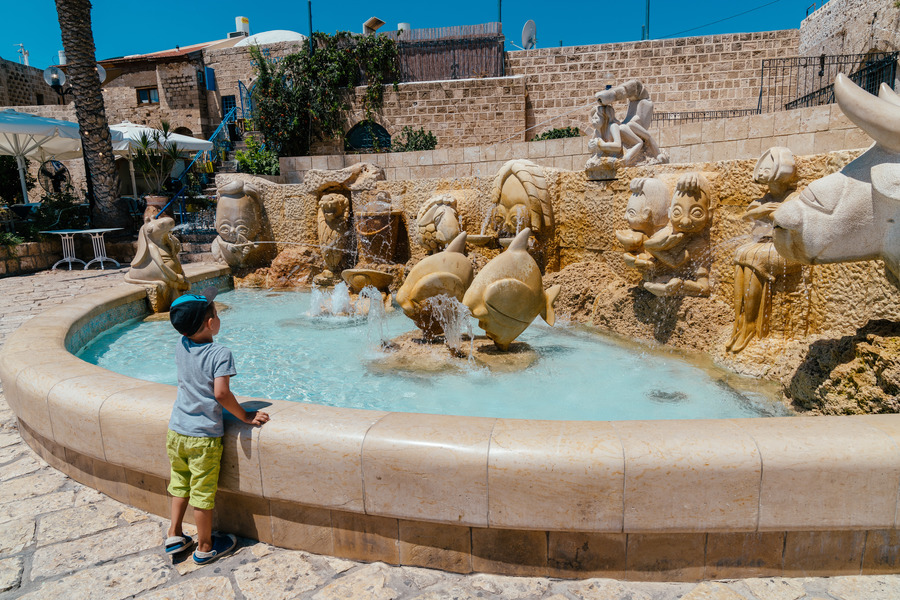
Fountain "Zodiac Signs", Jaffa. Photo credit: © Dmitry Mishin
Sculpture at Yad Vashem
Perhaps one of the most moving places to witness these is at Yad Vashem, Israel’s museum to the murdered six million. Located at Mount Herzl, in Jerusalem, visitors can explore the extensive museum and walk through the grounds, where there are 20 outdoor sculptures that relate to remembrance and the Holocaust. These works include The Warsaw Ghetto Square, the Pillar of Heroism, and the Yad Vashem Candelabra.
The Warsaw Ghetto Square - designed by Nathan Rapaport, this monument is made of two bronze reliefs on a red brick wall (symbolizing the wall of the ghetto). On the right, the deportation of Jews to the extermination camps is depicted - young, old, healthy, and sick. On the left, there is a portrayal of the Ghetto Uprising, where men and women, with rifles, stones, and guns, fought heroically against the Nazis.
The Pillar of Heroism - this is a three-sided pillar, made of shining stainless steel conclave panels, the front of which bears the inscription: “To the martyrs...the ghetto fighters...the partisans...to those who rebelled in the camps...to the fighters of the underground...to the soldiers in the armies...to those who saved their brethren...to the courageous people who took part in the clandestine immigration...to the heroes of valor and revolt …”
The Yad Vashem Candelabra - this symbolic menorah was designed in 1985 by the sculptor Zohara Schatz, the first woman to ever win the Israel Prize. The six-branched aluminium candelabra represents the six million Jews killed and the piece, considered to be one of the museum’s great emblems, is at its entrance.
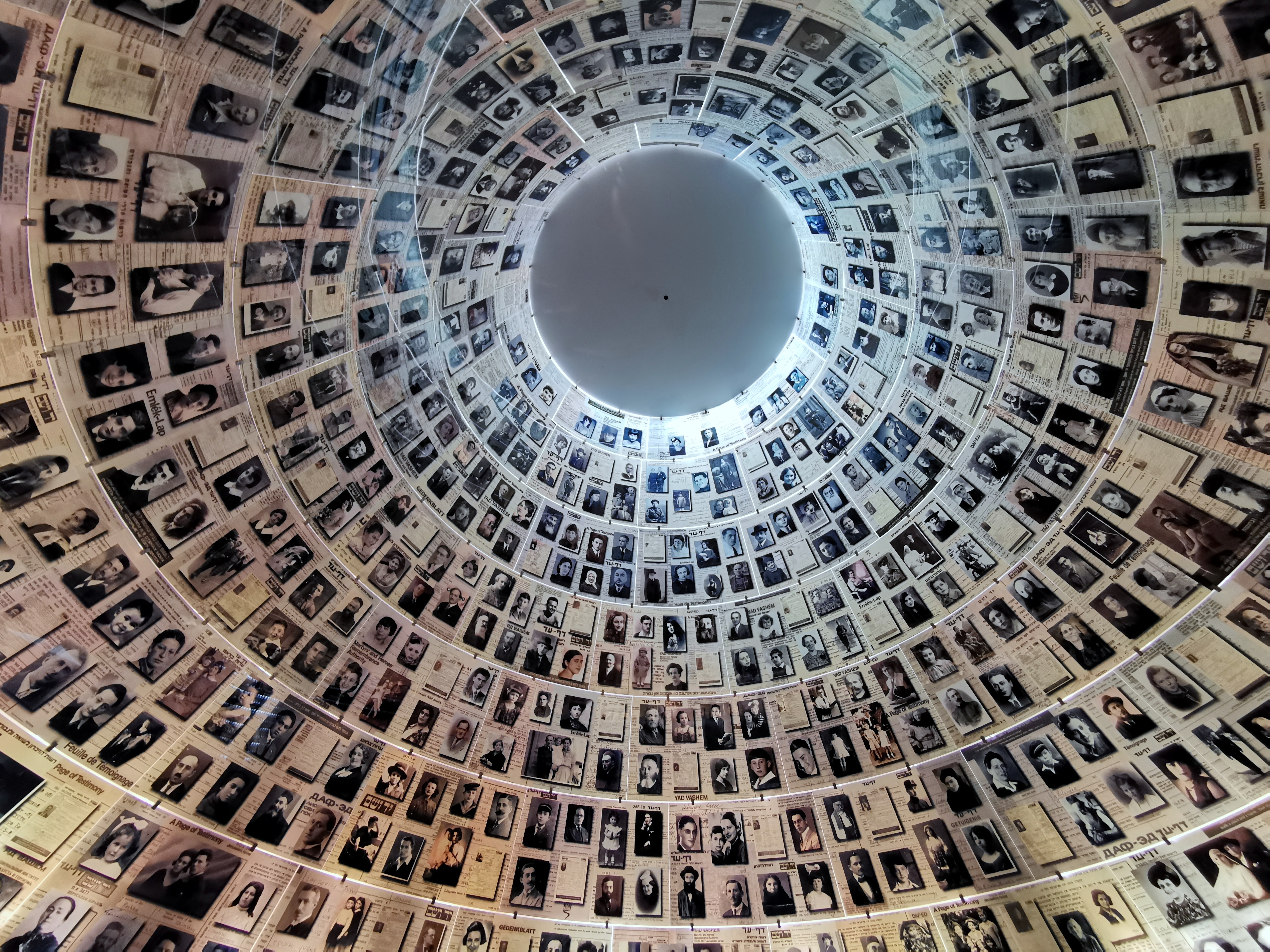
Hall of Names in the Yad Vashem Holocaust History Museum, Jerusalem. Photo by Snowscat on Unsplash
Sculpture at the Weizmann Institute, Rehovot
In 1972, Danny Caravan created the monument “To the Holocaust” at the Weizmann Institute, Israel’s leading scientific institute in Rehovot, a city close to Tel Aviv. Inside a rectangular plaza (which is sunken) is a large bronze sculpture of a broken Torah scroll, balanced in a very unsound way (as if it could fall at any moment) on a white stone basis. A stream of water that flows constantly drips down a crack in the center of the base. The dripping water symbolizes the tears of those who were sent to their death.
A Star of David is engraved on the Torah as well as a series of numbers - these are carved to represent the numbers tattooed onto the arms of victims of the camps. There is also an inscription of the first line of the Shema - a central prayer in the Hebrew liturgy and one said traditionally by Jews before death draws close.
Sculpture at Kibbutz Mishmar Ha’Emek
The only Holocaust monument established in Israel before the creation of the state in 1948, this is a monument to the children who perished in this terrible time. Located at Kibbutz Ha’Emek, it is nestled in the Jezreel Valley, a beautiful part of northern Israel. A stone wall surrounds a small plaza and carved into the wall are four alcoves, each with sculptured figures. They movingly depict the tiny spaces in which children hid and the ways in which their parents tried to protect them.
The Gate of Faith by Daniel Kafri, Jaffa, Israel. Photo by Jeremy Bezanger on Unsplash
The Billy Rose Sculpture Garden at Jerusalem’s Israel Museum
The Billy Rose Art Garden, named after the New York theatrical producer and designed by the Japanese-American sculptor Isamu Noguchi, is considered to be one of the most wonderful sculpture gardens of the 20th century. Located in Jerusalem’s world-famous Israel Museum, Noguchi began planning the garden in the early 1960s on the steep slopes of the grounds of the museum and divided it up into different sections, using walls of fieldstones.
Noguchi worked with a Zen principle in mind and used materials such as water, gravel, and concrete, as well as incorporating many plants indigenous to the Middle East into his design. Completed in 1965, and set against the backdrop of an astonishing and dramatic Jerusalem landscape, visitors can wander the gardens and see works by many famous sculptures, including Henry Moore, Pablo Picasso, Auguste Rodin, Joel Shapiro, and Menashe Kadishman.
Notable pieces include the Indian artist Kapoor Anish’s ‘Turning the World Upside Down’ - an hourglass-shaped reflective piece that effectively turns the world on its head. Apparently, it is meant to represent the vision of the former mayor of Jerusalem, Teddy Kollek, who saw Jerusalem as a ‘merger’ of heaven and earth.
Another piece that is infinitely photo-worthy (and loved by Instagrammers!) is Robert Indiana’s famous ‘Ahava’ sculpture at the Israel Museum in Jerusalem. Ahava, in Hebrew, means ‘love’ and is spelled out in four Hebrew letters (aleph, heh, bet, heh). Visitors can climb inside the huge steel weathered letters and pose for the camera with the Jerusalem hills in the background.

Park Sculpture by Eli Ilan, Har HaBanim, Ramat Gan, Israel. Photo credit: © Dmitry Mishin
The Tel Aviv Museum of Art Sculpture Garden
Established in 1999, the Tel Aviv Museum’s sculpture garden gives visitors the opportunity to view over 30 contemporary works by sculptors both from Israel and around the world, in its permanent collection. The Lola Beer Ebner Sculpture Garden in Memory of Dolfi Ebner is a true place of peace and tranquility in busy Tel Aviv. A sunken garden, it is surrounded by eucalyptus trees and the perfect place to take a break from the hustle and bustle of Tel Aviv.
Visitors should look out for the Tel Aviv–Yafo Mosaic, created in 1999 by Italian artist Enzo Cucchi. It forms the path linking the upper level to the lower one. Another interesting sculpture is by Israeli artist Yitzhak Danziger in 1963. Close by, in Nata’s Garden, are two other sculptures on permanent display: ‘Sisyphus and Jacob Meet by the Well’ by Sigalit Landau and ‘Wreaths’ by Erez Israeli.
"Mizpor Shalom" - The Ursula Malbin Sculpture Garden, Haifa
Situated in Haifa, this is the first sculpture garden in Israel devoted entirely to a female artist. Here, visitors can view many of Ursula Malbin’s works, created in the last 60 years. Mitzpor Shalom (which in English means ‘Peace Park’) is close to the Bahai Gardens.
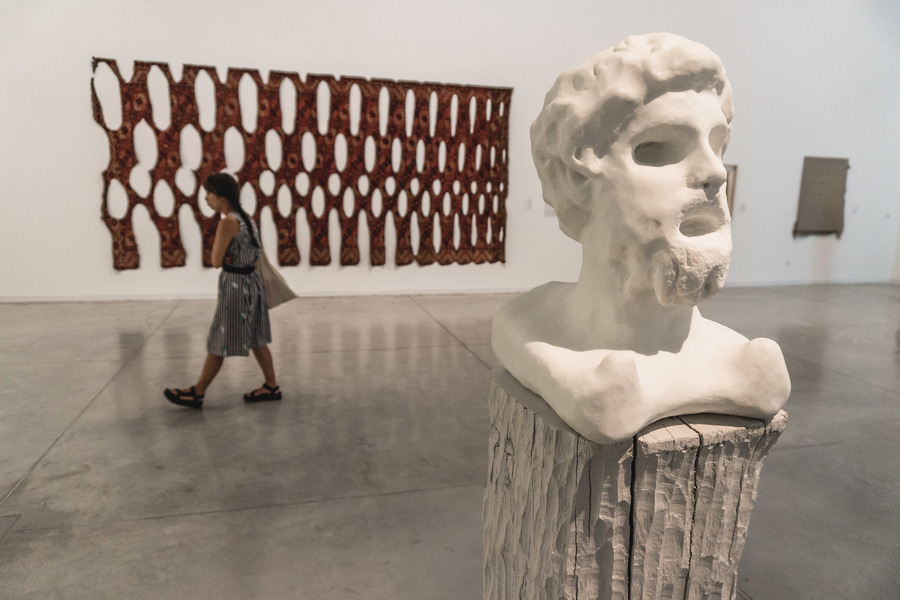
Tel Aviv Museum of Art. Photo credit: © Dmitry Mishin
The Omer Open Museum Sculpture GardenThis sculpture garden can be found just outside of Beersheba, the getaway city to Israel’s Negev desert. Omer is a small ‘yishuv’ (a settlement created before the State of Israel was created) and on the grounds of its Open Museum visitors can see a range of artworks from the museum collection.
The collection includes sculptures by the following artists: Ilan Averbuch, Shlomo Selinger, Shlomo Schwarzberg, Ofra Zimbalista, Gengiz Çekil. As well as the permanent works, the garden also features temporary sculpture exhibitions. Omer is one of three Open Museums (the other two are Tefen and Tel-Hai, in the north of Israel) and another sculpture garden - Dalton - which have all been established within industrial parks in Israel.
Kibbutz Dalia Sculpture Garden, Galilee
Located in Galilee, this sculpture garden was established by kibbutz member Nathan Ezra Yenuka who wanted to focus on art and present it in a way that really represented the spirit of the community. There are 24 works to see and they are made of all kinds of material, including polyester, marble, and even local rocks.
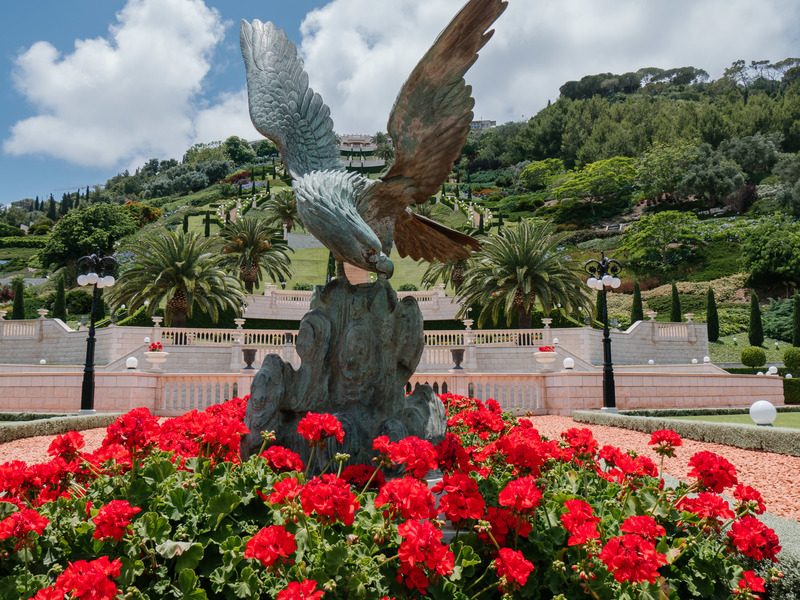
Bahai Gardens, Haifa. Photo credit: © Dmitry Mishin
Varda Yatom Sculpture Gallery, Upper GalileeLocated in Kibbutz Sasa, in the Upper Galilee, artist Varda Yatom is considered to be one of Israel’s leading ceramic sculpture artists and has a wonderful gallery which you can visit, and meet Varda herself. The kibbutz also boasts a museum of archaeology (free entry) and panoramic views of northern Israel and Lebanon. Our tip: don’t miss their ice cream parlor - the flavors are fantastic!
Sculpture Park at Mitzpe Ramon, Negev Hills
The brainchild of Ezra Orion, this sculpture park is located on the edge of the Maktesh Ramon (the Ramon Crater) which was formed over millions of years. It runs for 2 kilometers and was created in 1963 after artists from across the world were invited to arrive and create whatever piece they chose. The only condition - they had to chisel their pieces out of one large rock. Take a trip to the Negev desert, visit Mitzpe Ramon and decide for yourself what some of these weird and wacky creations represent!
To explore Israeli sculpture in detail feel free to join our private tours.
 Login / Register
Login / Register
 Contact Us
Contact Us
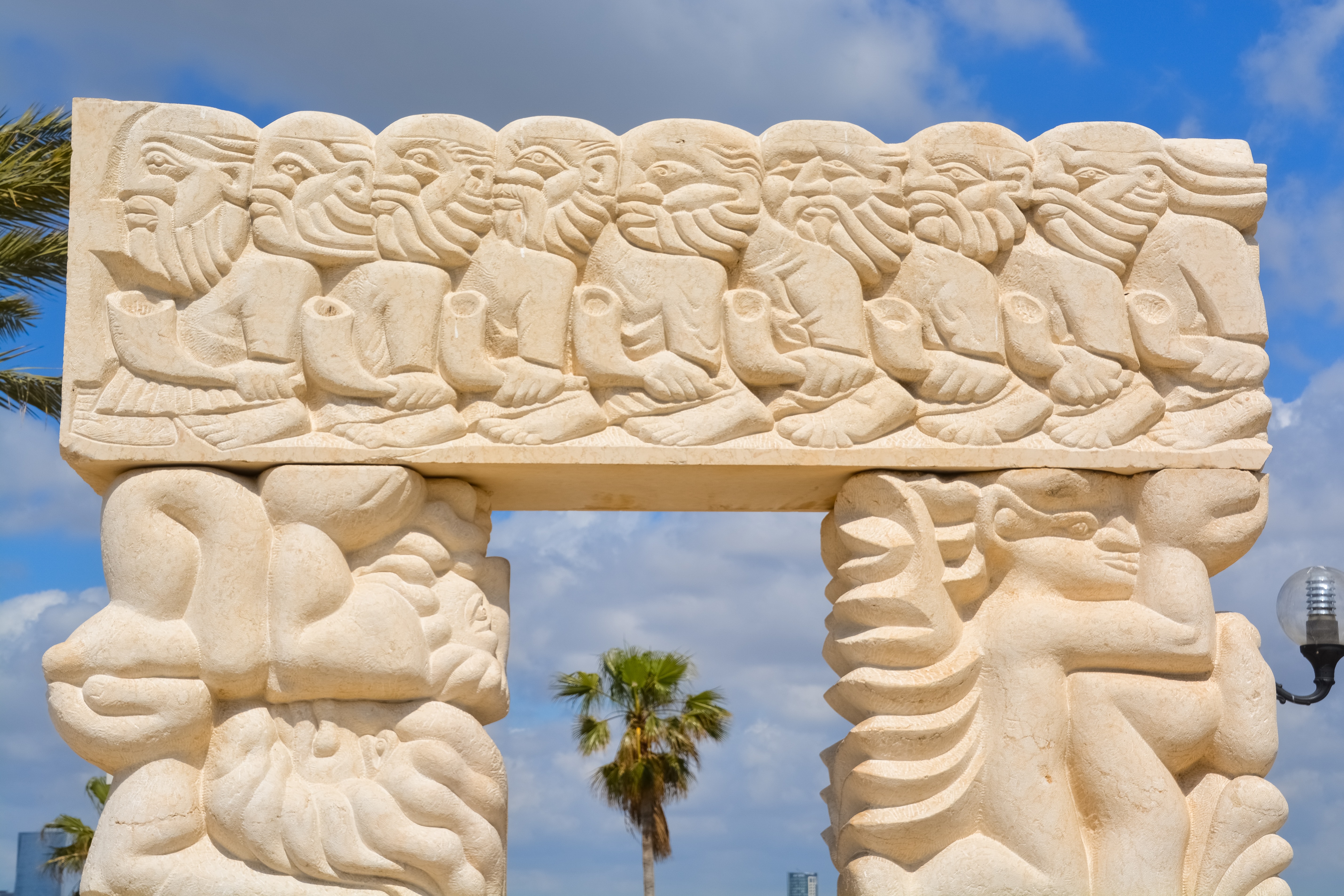
 Certificate of Excellence
Certificate of Excellence Guaranteed Departure
Guaranteed Departure Low Prices Guaranteed
Low Prices Guaranteed 24/7 Support
24/7 Support




